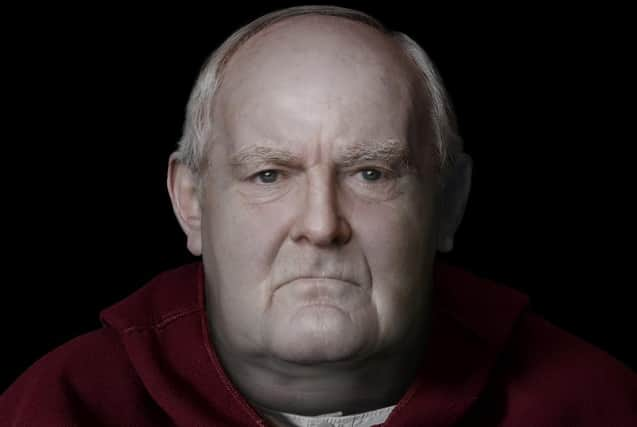Faces of medieval ancestors revealed by Yorkshire archaeological experts


And now academics at the University of Bradford have created astonishing 3D images and animations based on the skulls of three people who lived in medieval Scotland.
The burials at Whithorn are of huge archaeological importance and the site is known as the “cradle of Scottish Christianity”.
Advertisement
Hide AdAdvertisement
Hide AdThree 12th to 14th century Wigtownshire residents, a female, a cleft and lip-palate cleric, and a Bishop, were buried at Whithorn Priory in the Dumfries and Galloway region of Scotland.
Craniofacialist anthropologist and forensic artist Dr Christopher Rynn used 3D techonology to create an approximation of what the faces of the three people may have looked like.
Dr Rynn said: “This entails the use of facial soft tissue depths, musculature sculpted individually to fit each skull, and scientific methods of the estimation of each facial feature, such as eyes, nose, mouth and ears, from skull morphology.”
The project, named Cold Case Whithorn, was also joined by the University’s Dr Shirley Curtis-Summers.
Advertisement
Hide AdAdvertisement
Hide AdDr Curtis-Summers said: “My role as a bioarchaeologist is to examine archaeological skeletons to identify indicators of disease and trauma.
"I also analysis human bones and teeth for stable isotope analysis, which can inform us about the types of foods people in the past were consuming, and whether they were local to their place of burial.
"This project is of huge significance, because while we can never tell the full story of the lives of these medieval people, being able to reconstruct their diet, mobility, and now their faces, allows us to delve into their past and come face to face with them.”
The Whithorn graves were discovered in the 1950s by accident during a crypt excavation.
Advertisement
Hide AdAdvertisement
Hide AdObjects found in the graves included staffs made from bronze and enamel, indicating they belonged to a bishop.
Whithorn has long been associated with the roots of Christianity in Scotland. Latinus of Whithorn was the first named Christian, and St Ninian completed missionary work in the area.